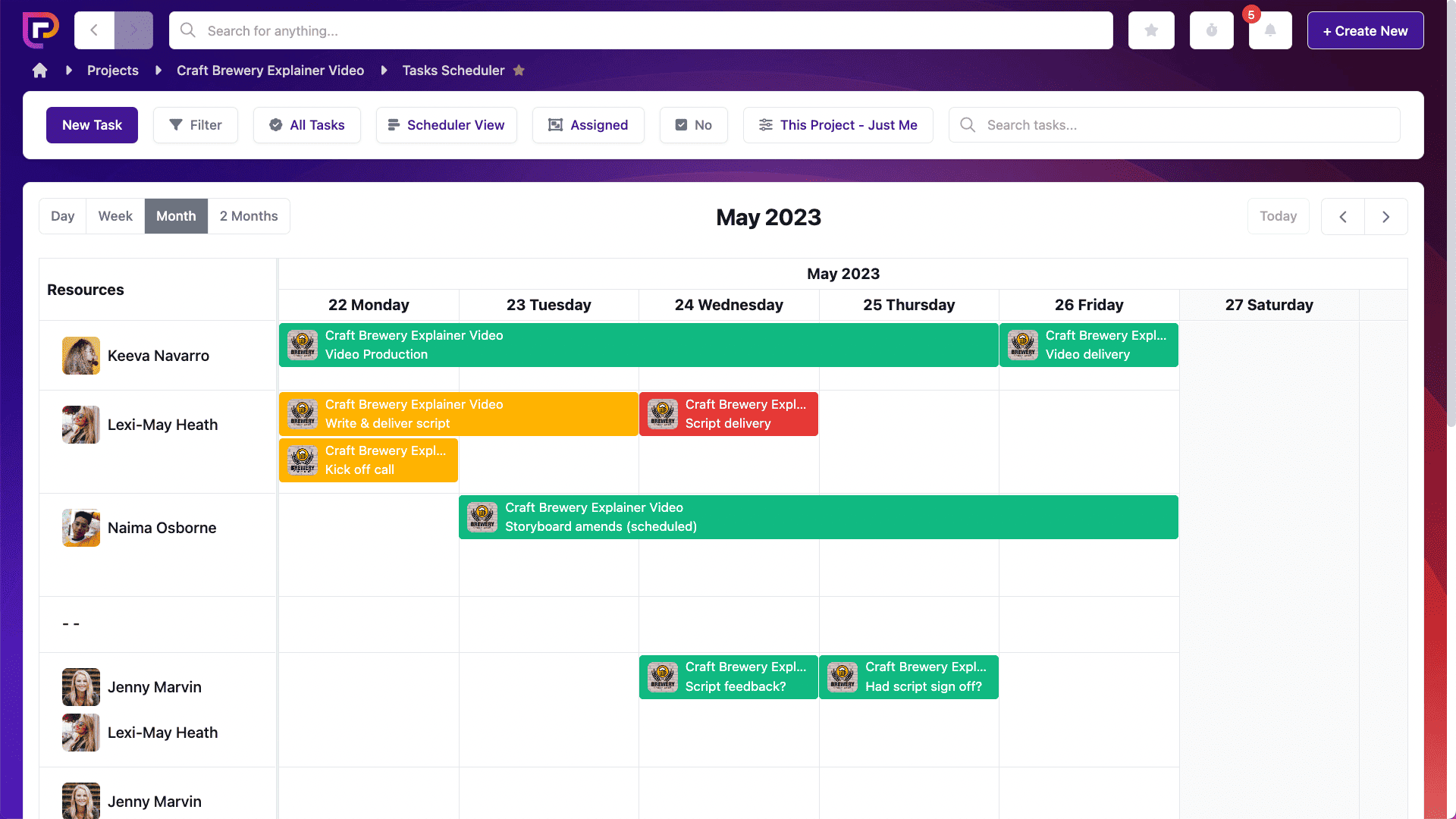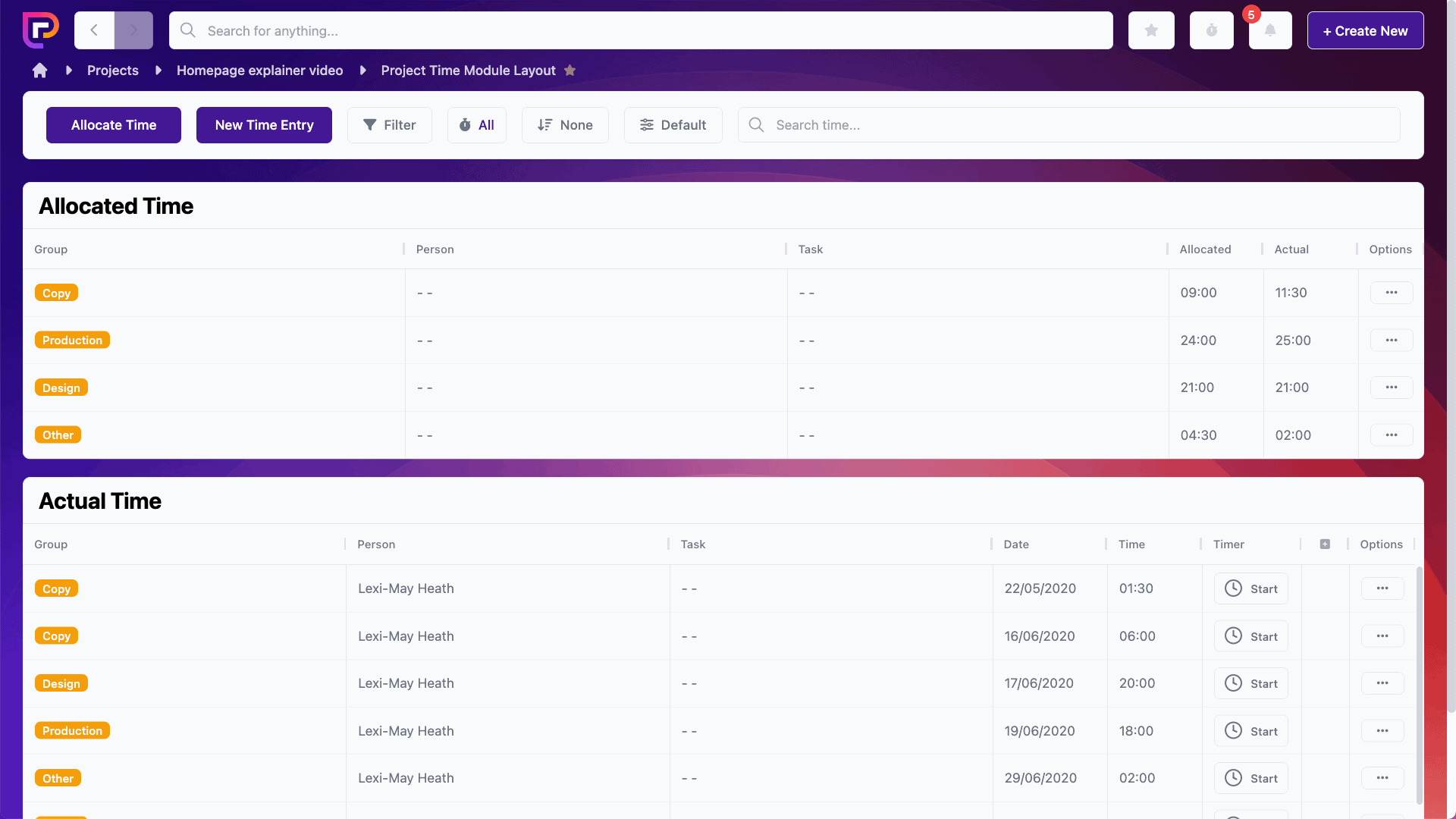Last updated on 16th May 2024
In this article we’re going to take a look at everything you need to know about resource management – from what it is, to why it’s important, and even some techniques that you can put into practice right away.
‘Resource management’ sounds like a big, scary term – but it’s something that all of us do in daily life, all the time.
Buying ingredients for a recipe? Resource management.
Packing your suitcase for a vacation? Also resource management.
But how does resource management apply to your business? Let’s find out…
What is resource management?
Resource management refers to the control and allocation of resources within an organisation. Resources can be things like staff members, materials, technology, money, and even time. An effective resource manager ensures that all of these things are balanced correctly so that projects can reach their goals efficiently.
Speaking of projects…
Well, project management is similar but it falls under the umbrella of resource management – because projects are another resource that can be managed in a business.
Project management is specific to each individual project. It involves managing things like project scope, budget, and timeline. Whereas, resource management is much broader and covers the organisational objectives (rather than project-specific goals).
Why is resource management important?
There are many reasons why resource management is absolutely vital for your business. Here’s a quickfire list highlighting the importance of managing your resources:
2. It helps to create transparency into workloads and team capacity.
3. Managing resources allows you to understand how many projects you can take on and allows you to plan for the future.
4. Resource management ensures optimum efficiency in your business.
Resource management techniques
1. Resource planning
Resource planning will help you understand the requirements for future projects so that you can optimise all of your resources – from people, to materials, budget, and more.
By creating a forecast of future resource requirements you set yourself up for the best chance of success. You can plan resources for upcoming projects by taking a look at your calendar or scheduler:

This should show all of your current and future projects so that you know what resources you have available.
You can also forecast based on past project experience. For example, if you track the time spent on a project then you’ll be able to accurately predict how much time will be required for similar projects in the future.

The same can be said for staff, costs, materials, and any other resources that are critical to your projects.
2. Resource allocation
Resource allocation means using all of the resources that you have in the most efficient way possible in order to get the best results.
You need to assign your resources to specific tasks or projects, and then continuously manage them as the project progresses so that you can avoid any potential hiccups, like schedule or budget overruns.
A Kanban chart can be a great, visual way to monitor how projects are progressing at a glance.

The Kanban tool in Project.co allows you to quickly reorganise your resources by dragging and dropping tasks into different columns for quick readjustments (if required).
3. Resource optimisation
Resource optimisation is another vital resource management technique. Only by optimising your resources can you ensure that you are limiting costs and idle time on projects to the best of your ability.
As with resource planning, you can use data from past projects to inform your decisions here. This data will allow you to understand exactly what resources you need for upcoming projects so that you can optimise resource allocation and ensure that no resources are being under-utilised.
4. Resource conflict resolution
Sometimes clashes will arise when multiple projects are required to share the same resources. It’s inevitable. It’s your job as resource manager to resolve these conflicts.
It’s important to use skills like negotiation and prioritisation here to ensure resources are being allocated to the most critical tasks.
5. Resource training
Resource training of course only refers to your human resources; your team members! When you invest in your team you can feel confident that they are enhancing their skills so that your business can remain competitive in your field.
Levelling up your staff is important if you want your projects to be completed to a high standard consistently, and it can also help to keep productivity and output high.
Final thoughts
So, now you know all about resource management and why it’s so important for running your projects – and your business – successfully.
If you want to learn more about how to prioritise tasks and make your projects as efficient as possible, then check out this article for more tips and tricks: 26 Realistic Ways to Improve Workload Management.



